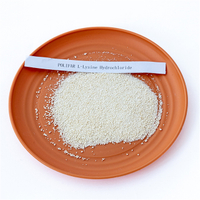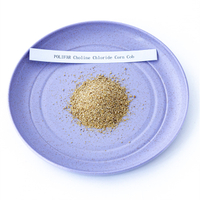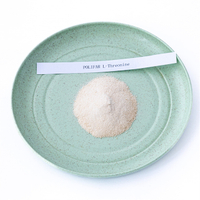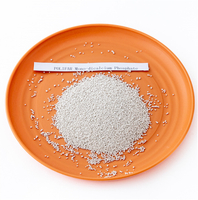Views: 9 Author: Site Editor Publish Time: 2019-08-19 Origin: Site








In recent years, with the rapid development of China's agriculture and animal husbandry, large-scale, intensive farming, aquaculture and feed processing industries are developing at an unprecedented rate. The domestic market is increasingly demanding feed grade calcium hydrogen phosphate. While this brings benefits to some people, some people begin to produce unqualified products to blind consumers. This article will explain in detail the specific information of feed grade calcium hydrogen phosphate.
The main points are as follows:
Introduction
Quality standards
The impact of substandard
Feed grade calcium hydrogen phosphate (CaHPO4) refers to calcium hydrogen phosphate which is used as a supplement for phosphorus and calcium in feed processing in accordance with relevant standards. Because the ratio of phosphorus to calcium is the closest to the ratio of phosphorus to calcium in animal bones and can be completely dissolved in animal stomach acid, feed grade calcium hydrogen phosphate is one of the best feed mineral additives recognized at home and abroad. As a kind of excellent poultry and livestock feed mineral additive containing phosphorus and calcium nutrients, feed grade calcium hydrogen phosphate can be completely dissolved in animal stomach acid, promote feed digestion, easily enter the animal body and participate in metabolism, and form the body. The hormones, enzymes and vitamins needed to maintain the ratio of phosphorus to calcium in the bones, thereby preventing various diseases caused by calcium deficiency in animals, accelerating the growth and development of livestock and poultry, shortening the fattening period, and rapidly increasing the weight; The amount of milk produced and the amount of egg production can increase the breeding rate and survival rate of livestock and poultry. At the same time, it can enhance the ability of livestock and poultry to resist disease and cold, and has a preventive effect on cartilage, chalk disease and dysentery of livestock and poultry.
Class I:
Total phosphorus content is greater than or equal to 16%; bismuth soluble phosphorus content is greater than or equal to 14%; water soluble phosphorus content is not required; calcium content is greater than or equal to 20%; fluorine content is less than or equal to 0.18%; arsenic content is less than or equal to 0.003%; Less than or equal to 0.003%; cadmium content is less than or equal to 0.001%; fineness powder is passed through a 0.5 mm test sieve of 95% or more; fineness granularity is passed through a 2 mm test sieve of 90% or more.
Class II:
Total phosphorus content is greater than or equal to 19%; 枸 soluble phosphorus content is greater than or equal to 16%; water soluble phosphorus content is greater than or equal to 8%; calcium content is greater than or equal to 15%; fluorine content is less than or equal to 0.18%; arsenic content is less than or equal to 0.003%; The lead content is less than or equal to 0.003%; the cadmium content is 0.001% or less; the fineness powder is passed through the 0.5 mm test sieve to be greater than or equal to 95%; and the fine granularity is passed through the 2 mm test sieve to be greater than or equal to 90%.
Class III:
Total phosphorus content is greater than or equal to 21%; 枸 soluble phosphorus content is greater than or equal to 18%; water soluble phosphorus content is greater than or equal to 10%; calcium content is greater than or equal to 14%; fluorine content is less than or equal to 0.18%; arsenic content is less than or equal to 0.003%; The lead content is less than or equal to 0.003%; the cadmium content is 0.001% or less; the fineness powder is passed through the 0.5 mm test sieve to be greater than or equal to 95%; and the fine granularity is passed through the 2 mm test sieve to be greater than or equal to 90%.
The adulteration of calcium hydrogen phosphate is more serious. At present, the counterfeit feed grade calcium hydrogen phosphate is more common in the mineral additive market, and some samples have almost zero phosphorus content. There are also some criminals who want to supplement the calcium and phosphorus content in the feed, and incorporate some other substances that are indistinguishable to be used as authentic products. The common calcium hydrogen phosphate adulterants are: stone powder, bone powder, agricultural superphosphate, phosphoric acid Calcium, talc, a mixture of phosphate rock powder and phosphoric acid, and a mixture of stone powder and phosphoric acid. Some of these adulterated products contain higher levels of calcium and phosphorus, but the utilization rate of livestock and poultry is very low, and some contain a large amount of fluorine, which seriously endangers the health of livestock and poultry.
Feed calcium hydrogen phosphate is widely used in the world, its annual output and consumption of more than 5 million tons of such a large cake makes many people salivate, leading to the frequent occurrence of substandard products on the market. They have to buy according to the standards, and they can't just listen to people saying that feed calcium phosphate producers should also produce products that meet the standards strictly to provide a clean market for consumers.
content is empty!






